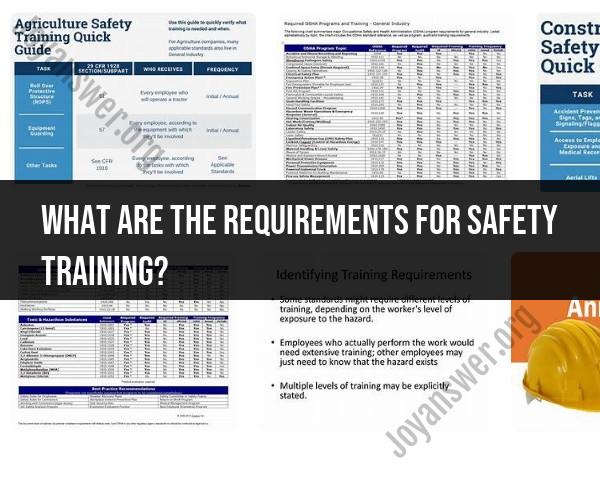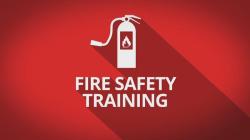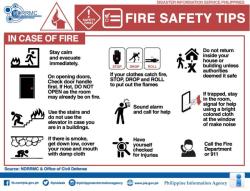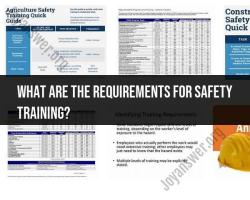What are the requirements for safety training?
Safety training requirements can vary depending on the industry, location, and specific activities of a workplace. However, there are several common elements that organizations typically consider when developing safety training programs to ensure compliance with regulations and standards. Keep in mind that these are general guidelines, and it's essential to consult relevant local, state, and national regulations specific to your industry. Here are some key elements to consider:
Legal Compliance:
- Identify and understand relevant local, state, and federal regulations that apply to your industry.
- Ensure that your safety training program complies with these regulations.
Risk Assessment:
- Conduct a thorough risk assessment to identify potential hazards in the workplace.
- Tailor your safety training program to address the specific risks associated with your industry and work environment.
Written Safety Program:
- Develop a written safety program that outlines the organization's commitment to safety, responsibilities, and procedures.
- Clearly communicate policies and procedures to all employees.
Employee Involvement:
- Involve employees in the safety training process.
- Encourage reporting of hazards and near-misses.
Training Content:
- Provide comprehensive training on general safety principles, emergency procedures, and specific job-related hazards.
- Ensure that training materials are up-to-date and relevant.
Frequency of Training:
- Establish a schedule for recurring safety training sessions.
- Regularly review and update training content to reflect changes in regulations or work processes.
Recordkeeping:
- Maintain accurate records of safety training for each employee.
- Document training dates, topics covered, and the names of instructors.
Competent Instructors:
- Ensure that instructors are knowledgeable and competent in the subject matter.
- Consider using qualified external trainers if necessary.
Documentation and Reporting:
- Establish procedures for reporting accidents, injuries, and unsafe conditions.
- Keep detailed records of incidents and investigations.
Emergency Response Training:
- Include training on emergency response procedures, including evacuation plans and first aid.
- Conduct regular drills to ensure that employees are familiar with emergency protocols.
Personal Protective Equipment (PPE):
- Provide training on the proper use and maintenance of personal protective equipment.
- Ensure that employees understand when and how to use PPE.
Continuous Improvement:
- Establish a system for continuous improvement of the safety training program.
- Regularly review and update training materials and procedures based on feedback and changes in the work environment.
Remember that these are general guidelines, and the specific requirements for safety training may vary depending on the nature of the work and the jurisdiction in which your organization operates. Always consult with local authorities and industry-specific regulations to ensure compliance.
Safety Training Requirements: A Breakdown
1. Standard Prerequisites for Safety Training:
While specific requirements may vary, some standard prerequisites for safety training include:
- Basic literacy and numeracy: Trainees should understand the content of safety materials and be able to perform basic calculations, if necessary.
- Physical capability: Trainees should be physically able to perform the tasks required in the training and understand the physical limitations of themselves and others.
- English language proficiency (where applicable): Trainees should be able to understand and comply with safety instructions and procedures, which may be provided in English.
- Prior knowledge or experience: Depending on the specific training, prior knowledge of the industry, equipment, or hazards may be required.
2. Differences in Safety Training Requirements:
Safety training requirements can differ significantly across industries and professions due to:
- Varying levels of risk: Industries with higher inherent risks, like construction or healthcare, typically have more stringent training requirements.
- Specific hazards and regulations: Different industries face unique hazards and regulations, requiring tailored training programs.
- Equipment and technology: Training may need to adapt to specific equipment and technology used in different industries.
- Certification needs: Some professions require specific certifications, like CPR or First Aid, which may be incorporated into training programs.
3. Legal and Regulatory Obligations for Safety Training:
There are legal and regulatory obligations for safety training in many fields. In the United States, for example:
- Occupational Safety and Health Administration (OSHA): OSHA sets general duty clause and specific standards for various industries, often requiring training for employees on hazard recognition, safe work practices, and emergency procedures.
- State and local regulations: Many states and localities have additional safety regulations and training requirements specific to their jurisdictions.
- Professional licensing boards: Some professions, like nurses or engineers, may have licensing boards that require specific continuing education credits in safety topics.
Examples of legal obligations for safety training:
- Construction workers: Must receive training on fall protection, scaffolding safety, and hazard communication.
- Healthcare workers: Must receive training on bloodborne pathogens, infection control, and emergency response.
- Food handlers: Must receive training on food safety and sanitation.
It's crucial to note that these are just examples, and the specific legal and regulatory obligations for safety training can vary greatly depending on the specific industry, location, and profession.
Here are some resources to find more information about specific safety training requirements:
- Occupational Safety and Health Administration (OSHA): https://www.osha.gov/
- National Institute for Occupational Safety and Health (NIOSH): https://www.cdc.gov/niosh/index.htm
- American Society of Safety Professionals (ASSP): https://www.assp.org/about
- State and local government websites









